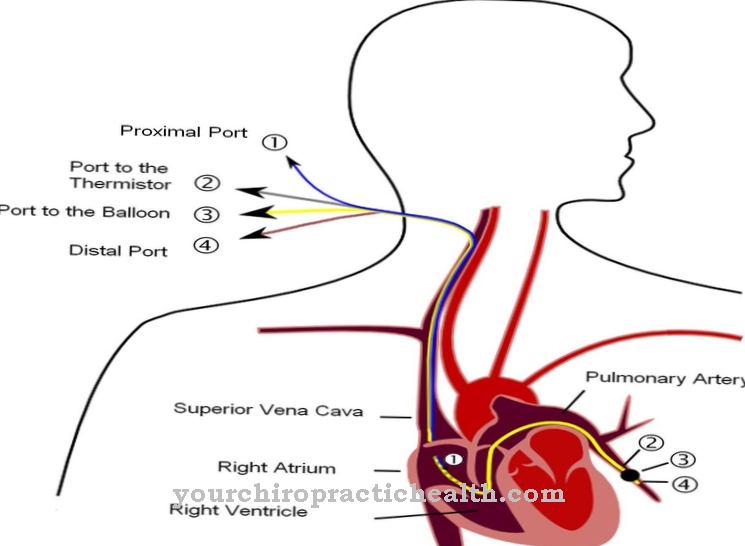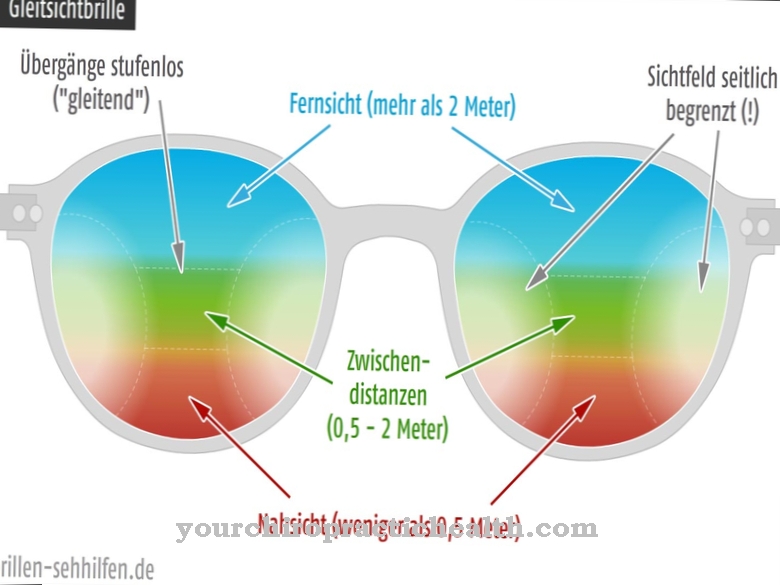contact lenses Like glasses, they are visual aids and correct visual defects. They are placed on the eye or on the tear film on it with the fingertips and can thus compensate for all common ametropia. Wearing glasses can be avoided in this way, which also gives contact lenses a practical and fashionable aspect.
What are contact lenses?

contact lenses like glasses, are optical aids that improve human vision and compensate for visual defects such as nearsightedness or farsightedness.
In contrast to glasses, contact lenses are worn directly on the eye and are therefore almost invisible from the outside. For this reason, they are very popular with athletes or particularly fashion-conscious people.
For the latter there are also so-called cosmetic contact lenses on the market, for example in reptile or big cat optics, which serve less of a medical purpose than "eye-catchers". In Germany, the costs for contact lenses are usually not covered by health insurance companies.
Shapes, types & types
who contact lenses want to wear, can choose between dimensionally stable ("hard") or soft models. The former consist of a non-flexible plastic and are placed on the thin tear film on the cornea of the eye.
They have a diameter of approx. 10 mm. After the maximum wearing time has expired, they must be removed from the eye and cleaned or placed in a special liquid. Soft contact lenses are flexible and conform better to the eye; For this reason, at 12 - 16 mm, they are significantly larger than the dimensionally stable models.
They do not require cleaning, but are disposed of after being worn. There are now soft contact lenses that can be worn in the eye for several months to a year.
Structure, function & mode of operation
contact lenses are made of plastic and are oxygen-permeable regardless of the model. They are ground in depending on the ametropia that is to be corrected and can thus obtain different diopter values.
In most cases, either nearsightedness or farsightedness is corrected through the use of contact lenses. Very complex models of the thin plastic lenses are already possible today. For example, so-called alternating contact lenses can be used, which combine two different optical zones. Multifocal lenses allow the wearer to see sharply both near and far. This is equally possible with hard and soft lenses.
Special night lenses that are worn overnight can correct vision for several days. Compared to using glasses, contact lenses offer a significantly less reduced or enlarged view of the objects, since they are worn directly on the eye.
In addition, the field of view is not restricted in contrast to the view through spectacle lenses. In order to ensure that the contact lenses function properly and to avoid damage to the eye, contact lenses should always be fitted by ophthalmologists or opticians.
You can find your medication here
➔ Medicines for visual disturbances and eye complaintsMedical & health benefits
contact lenses primarily serve the purpose of compensating for ametropia in one or both eyes.
Most common visual defects can be fixed with their help. In contrast to glasses, this correction is optically inconspicuous and often cannot be perceived by the other person. This is particularly useful for active people. Contact lenses can also be used in certain work areas where wearing glasses is prohibited for safety reasons.
Even fashion-conscious people see a clear advantage in wearing contact lenses, because glasses are often perceived as annoying. In contrast to the corrective models, however, cosmetic contact lenses hardly fulfill a medical or health function, but are primarily used to attract attention by changing the color or shape of the eyes.
Wearing contact lenses can, however, cause problems for sensitive people as the foreign bodies on the eye are bothersome or scratchy. Negligence in hygiene or too long wearing can cause conjunctivitis, among other things. Contact lens wearers should therefore always adhere to the exact guidelines.

























.jpg)


